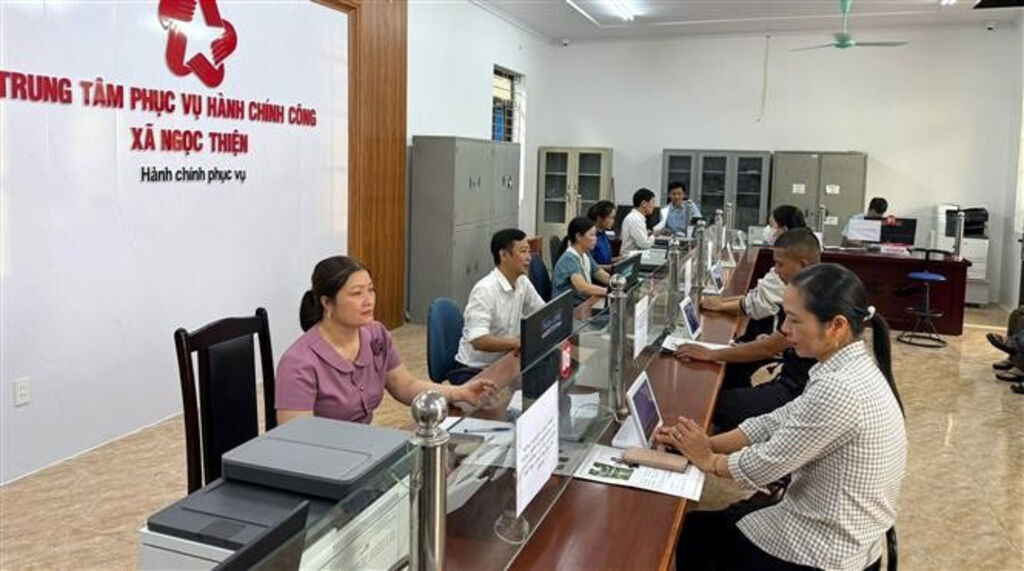 |
| At Ngoc Thien commune's public administrative service center in Bac Ninh province__Photo: VNA |
Administrative procedures for citizens and businesses had been issued in a timely manner, with clear and detailed regulations, and were promptly put in place to ensure seamless implementation as the two-tier local administration model began operations on July 1, Deputy Minister of Home Affairs Nguyen Thi Ha said at the Government’s regular press conference on July 3.
According to the official, the Prime Minister had issued 28 decrees on the decentralization, delegation of authority, and delineation of responsibilities between central and local administrations, as well as between provincial and communal-level administrations. Additionally, ministries had issued 58 circulars, providing a comprehensive legal foundation for the implementation of the two-tier local administration model.
The decrees include comprehensive administrative procedures, clearly specifying the authority, required documents, processing time, costs, and administrative forms, making it easier for people and businesses to access and implement them immediately from July 1, Ha said.
Following the issuance of the decrees, ministries and ministerial-level agencies promptly announced administrative procedures under their jurisdiction, she added.
Besides public announcement of administrative procedures, several ministries had issued documents to local authorities or published lists of administrative procedures on their official portals to provide comprehensive information to local administrations, citizens, and businesses, ensuring that administrative procedures are accessible in a convenient and timely manner.
For localities, based on the guidance from central agencies, the standing boards of the Party Committees of provinces and centrally-run cities had issued plans to pilot the two-tier local government model, focusing on applying information technology and promoting digital transformation to support the effective operation of the new administration model.
Ha stressed that in the coming time, along with accelerating administrative reforms and digital transformation, efforts will concentrate on perfecting the process of handling administrative procedures in the digital environment to reduce time and costs for citizens and businesses; enhance the quality of online public services; and ensure transparency, accessibility, and convenience for individuals, organizations, and enterprises anytime and anywhere.
Addressing the event, Minister-Chairman of the Government Office Tran Van Son said that by the end of this year, all administrative procedures related to businesses are expected to be processed online, regardless of administrative boundaries within each province. He added that localities are currently upgrading their systems to realize this target.
Regarding the National Public Service Portal, he stated that there is now a single unified portal, replacing the previous 63 separate ones. At any time and from anywhere, people can submit applications online using a computer, tablet, or mobile phone with internet access. Through this portal, applications are transferred to provincial and commune-level public administrative service centers for processing in accordance with their authority.
"Most importantly, through the National Public Service Portal, people can monitor the entire process of settling administrative procedures. It also serves as a channel for collecting and addressing feedback and recommendations from both people and businesses," said Son.- (VNA/VLLF)









